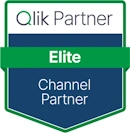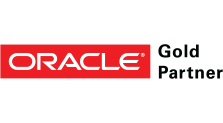As QlikView reaches 33,000 customers, now would be a great time to share the reasons that make QlikView a fantastic product and why every company should at least consider an agile analytics / BI on demand tool such as QlikView.
What follows are the edited responses by contributors from a Linkedin discussion in 2011 on this very topic to identify 100 ways to use QlikView, different reasons that would give business benefit and make QlikView the favourite of even more users¦
100 Ways to use QlikView in 2011
Adrian Parker
1. Sales Order Processing – gross margin price mark up calculation across multiple legacy ERP system price files.
Barry Talbot
2. Financial analysis – GL account reconciliation, Income Statement analysis, Financial KPI’s.
3. Spend analysis – purchasing analysis
4. Traceability – all industries that must comply with any of the regulations will love this one. The data can be in multiple source systems (Shop Floor Control, ERP, spreadsheets).
Jay Jakosky
5. Auditing of security permissions (file system, firewall, ERP areas, etc.)
Adrian Parker
6. Sales by product by Employee – by time/day
7. Sales by product by square foot – by time/by day
8. Sales EPOS trending caused by external factors eg weather, time of day, local population changes eg football matches
9. ERP replacement reporting (high cost and ‘speed’ to deliver are often cited as reasons to use QlikView. EG SAP and JDE – thus avoiding the complex development processes. for single ERP instance
10. Use of QlikView as enterprise reporting tool across multiple ERPs
11. Use of QlikView as enterprise reporting tool to allow standardisation prior to an ERP upgrade/amalgamation etc and thus avoid a lot of the pain and cost of an upgrade. Very true when migrating from JDE World to E1
12. Can create demographic charts against time to display change during a period. Eg traffic being monitored via RFID. On the back of data captured modelling can be done to optimise the layout/scenario at hand. Eg within a warehouse, to track order fill status.
13. HR Talent Management – plot on maps the skill sets of employees and create KPIs to display against. See where you comply and where you do not. A good example is on employee mix and pay comparisons.
Sudhir Kumar Singh
14. Comparing Secondary sales ( Data is in Excel sent by Field sales guys or distributors on a schedule) and primary sales. (primary sales Data is in ERP)
Frank Kelly
The speed and ease of navigation that Qlikview provides means that a buying team member can investigate several potential issues at the same time and make decisions more quickly, based on a more complete business view. Retail Merchandising – There are probably a 100 business issues that one QlikView application can help resolve within the Retail Merchandising department. Here are a few, analysed by the KPI (symptom) that needs to be monitored.
15. Stock Shortages – identify where expected stock availability is not and will not cover expected demand.
16. Late Purchase Orders – identify late PO’s so they can be expedited, rescheduled or cancelled.
17. Late Purchase Orders – identify alternative suppliers or products to replace late Purchase Orders
18. Slow Moving Stock – identify products that are not selling as quickly as forecast. Manage the open Purchase Orders accordingly.
19. Slow Moving Stock – review these products across the estate and shift stock to outlets that are selling it faster.
20. Promotions – monitor sales impact of promotions – by product and by store – decide whether to curtail or continue.
21. Margin Management – review margin at company level and analyse by product and store hierarchy and drill down to individual buyers and products.
22. Negative Stock – identify negative stock items and investigate the purchasing, sales and stock levels over time right down to individual transactions.
Steve Dark
23. Allowing more users access to data held within a business, where this was previously constrained by software licenses, technology or user ability.
24. Analysing Exchange log files gave a huge insight into where mail was originating from allowing effective blacklisting / whitelisting. It also highlighted where employees were wasting time.
25. Geographical mapping on the front of a CRM system allowed sales people to ‘drop in’ on other prospects in the vicinity of existing sales calls, where they previously may have missed the fact they were close by.
Adrian Parker
26. Health & Safety Reporting – Time Since last accident.
27. BI Readiness Assessments – Systems access/security and data validation.
28. M&A Due Diligence
Anthony Brennand • Operational real-time and legacy reporting: Volume of tasks (open tasks, backlog and bottle necks), turnaround times, productivity and quality scoring. Performance against SLA by client and client-segment / team
Vesa Saarinen • Pulp and Paper and related equipment
29 Show equipment supplier market development & market shares by supplier, customer, country, product, fiber type, capacity etc. etc.
30 Show installed base by product, capacity, customer, country, age
31 Pulp & Paper cost structure development by mill / company / country / grade / year / quarter
Edward Bobrin
32. Analysis of service contracts for completeness, data quality, and new sales opportunities
33. Quality Management. Use of QlikView for analysis on causal defects and quality trends in manufacturing, construction, and/or service delivery
Gilles Pol
34. Market basket analysis
35. What if scenarios
Chris Whitlock
36 Spend Analysis of Hospitals.
37 Use it as an expensive clock
38 Gant Charts (horrible)
39 Price Comparisons
40 Data Extraction
41 Return of Investment
42 Horse Racing Stats
43 Lottery
44 Mapping Supplier Spend trend on Google Maps
45 File Search Tool on large Directories etc.
Troy Patterson
46. Supplier Visibility to inventory consumption / days on hand by SKU/location
47. SKU / Store level sales analysis
48. Customer visibility to inventory on-hand
49. Customer purchase history
Adrian Parker Mobile Apps:
50 Contact Information
51 Engineer Calling Information
52 The infamous KPIs on the beach : Management whilst on holiday app
Adrian Parker Cash:
53. Cash flow Forecasting across multiple systems
54. FOREX Exposure
55. DSO Calculations
56. Exchange Gains and Losses Calculations for BS Revaluations
Boyana Likomanova
57. Financial analysis of Bulgarian Stock Exchange via web
Martin van Wunnik Financial Consolidation:
58.Consolidated Accounts
Peter Edling True Market analysis:
59. Application that combine identified customers with total market B2B/B2C. In combining customer unique buy history with total market you can use your know-how about your business to identify market profiles.
60. Campaign management – integrated campaign management and analysis with nr.59
Nigel West • QlikView’s in-memory technology allows us to:
61. Slice & dice IRR (for Investment Fund Performance) values over any dimension, this is virtually impossible without in-memory technology as the performance would make it unusable
Marius Editoiu Wall screen display auto refreshed:
62. Consolidated product and customer status along with news, weather and traffic events
63. Consolidated supply chain distribution activity along with news, weather and traffic events
Adrian Parker
64. Commitment Accounting – Keep commitments on a separate system to your Financials and combine with budgets and forecasts. Easy to do and of huge benefit to any company that works ‘jobs’. Any corporate marketing department that has brand marketing activities.
65. Project Reporting – joining project status reporting with financials to track %completion and estimated project cost – most revealing
66. Leverage Investment in legacy solutions with poor reporting. Why pay to upgrade any solution just for better reporting when you can employ QlikView instead. Sweat the assets some more. Great examples are legacy iSeries/AS400 products sold under processor based costing methods that make upgrades very expensive
Celedo Lopes Corporate Performance:
67. Balanced Scorecard (BSC)
68. Database Marketing (DBM)
69. Planning and Budget
Celedo Lopes
70. Electrical Energy Fraud
71. Call Center’s sells analysis
72. Call Center’s calls analysis
73. Collecting in Maps
74. Sales in Maps
75. Complaints in Maps
76. Telecom Activiy in Maps
77. Service Orders in Maps
78. Demographic Information in Map
Jason Long
79. Web/Online Marketing Analytics
Dipesh Bhoola
80. Retail: Sales analysis by Product. Qlikview made easy work of millions of transactions collected daily and analysed in multiple dimensions
Lucian Cotea
81. IT: Database garbage identification
82. Real Estate: Portfolio analysis
Paresh Gudhka India
83. Life / Non Life insurance
84. Consumer finance
Tim De Prijcker • CRM
85. Follow up of sales force KPI, other than sales figures, such as number of visits, pipeline of projects, and others.
86. Data quality management
87. Customer segmentation
Mario Badillo •
88. Budgeting, using sales history generate a next year budget.
89. KPI´s of Friedman sales methodology.
90. Benchmark, using public and private information.
91. Hotel occupancy
92. Consumptions in restaurants, for table, for seller, per hour, per day of week
Steve Crosson Smith •
93. Data discovery…great for interactively exploring your data to look for garbage (see item 81) but also to simply understand what data is available to you to help you to understand the workings of your business
94. SLA management – internal facing (e.g. IT helpdesk) or external (customer helpdesk). Visual indication of performance against SLAs overall, by operator, by product, by geographical area, by manager etc etc all from the same application and data set.
95. Leakage or wasteage management (expected yield vs actual). This falls into several camps including fraud/theft, bad practice/wasteage and monitoring of suppliers
William van Lith •
97. ABC (Selective Inventory Control) analysis
Mark Elliot Lopez •
98. Project Management Tracking
99. Product Lifecycle Management
100. Market Leading Indicators & Cost Modelling
Damon Cool •
101. Use to parse and validate flat file data and create insert statements for loading into another system
102. Test traditional report program SQL logic by building a quick app in QV
Marco Casalino •
103. Track ships and their captures (fish) and decide to which port should the ship be sent, considering port availability, distance, process times…. almost in real time
David Sedgwick •
104. Performance Review Framework for contact centre Advisors. Pulling together KPIS from multiple data sources (Quality, Sales, Adherence, Attendance, Handling Time, Call Transfers) to provide a single monthly performance review document as well as daily and weekly operational views
105. Prototyping. Very useful for ‘quick and dirty’ investigations of data, table relationships, bad data etc
106. Random Data Selection. Quality Audit has already been mentioned here and we use QlikView to report on all aspects of our QA system from the number of calls graded, Quality Score all the way down to individual Question response and even Assessor Calibration. We also however enhance the main QA system by providing random call IDs from the same QV application that the assessors then audit and ultimately feed back into the system
107. Track UFC Mixed Martial Arts fighters! (Whilst possibly not directly beneficial to my business, the additional QV knowledge gained doing it has proved very useful!)
Stewart Teed •
108. Risk Analysis in Financial Services. Portfolio analysis of exposure and credit quality over time. Model analysis as well
Chee Heong Lim •
109. Cruise Revenue Management
110. Point of Sales Analysis and Customer Spending Behaviour
111. Casino Player Tracking Analysis
112. P&L Analysis
George Kallas •
113. Consultant Utilisation (Utilization). Specifically tracking billable hours for professional services rendered and tracking which consultants are able to charge for most of their time.
40 hours/week could represent 100% and of course billing for more than that would be superb and depicted at > 100%
Scott Magnuson •
114. Retail – Cannibalization of product lines – Detailed profit analysis of a new product introduction’s impact on existing products. (Convenience store chain)
115. Supply Chain – PPV – Purchase Price Variance, measuring variations from the baseline by volume. (Consumer products company)
116. Synthetic Profit & Loss – Measuring off-balance sheet performance according to management metrics rather than accounting rules. (Oil & Gas company)
Cotiso Hanganu •
117. Project and Project Portfolio Management
Pierre Dumas • Business Process Management
118. Workstation management : all you want to know about hardware, software and life cycle
119. call center statistics
120. IT business process cost model and follow up for managers
Leonardo Vaz • IT Dashboard:
121. Server Indicators
122. Project Management
123. Billing control
124. Costs, HR & Investments
Cotiso Hanganu •
125. Road Police has an application counting car accidents, circumstances, injure severity, regions, roads, etc.
Jennifer May •
126. HR – Monitoring compliance with Equality & Diversity policies
127. HR – Absence monitoring
128. School League Tables
Jon Soars • Aviation data
129. Seat capacity / Passengers across countries, regions, aircraft types etc
130. Fare history
131. Route profitability and economics
132. Passenger forecasting
Alejandro Blaas Nacle •
123. Risk Analysis – analyzing scoring strategies
134. Customer Credit Card Usage
135. Behavioural Analysis of Credit Defaulters
136. IRR and margin profit of large portfolio of Credit products
Paul Challinor •
137. AR Days to Pay history analysis by product line
138. Supplier Profitability analysis
139. Sales booking trends and period-end projections
140. Inventory trends and turns analysis
Binu V George • ABC Analysis
141. Airline Profit Link Bonus Parting Analysis
142. Warehouse Control and Forecast
143. Root Cause Analysis
Jon Foote •
144. Activity analysis of sales force – calls on customers, Frequency, Reach across customer base.
145. Customer contact analysis, activities at locations,
146. Sales vs activity – data from multiple sources join through location ID’s and dates.
147. Sales analysis – MS, Growth, EI, PI. Month, QTR, YTD
Gathoni Mahleka ACIM •
148. Visualisation and trends of email campaign Clickstream data
Edgar Osorio • Travel & leisure
149. Consolidate customers behaviour from the channel of purchase (web, direct marketing, promotions etc) to purchasing history while in the resort. CRM and ERP data consolidation
Pablo Labbe • Someone implemented a Data Mining Algorithm like :
150. Clustering, Basket Analysis, Decision Trees, Neural Networks, Regression,
Jaime Saldaña •
151. QlikView helps in the process od ERP depuration and or migration
152. Helps as backup system for historical data
153. With the SAP Connector QlikView helps to reduce cost of ABAP programming
Felix Snijders •
154. recalculate the wages of all personnel, depending on function, step, next step and percentage that has been agreed upon with the union. Provide info to divide the budget of the total raise in salary per Business Unit/department.
155. reconciliation of all changes that are done in the personnel database (#, responsible user, department etc) and produce stats in order to fine tune the workload among the employees of the HR department
Arno van der Merwe •
156. Activity Based Costing
157. Capacity Management Reporting on Workflow systems
Fernando Corral •
158 . Analysis of Customers Behaviour (see 61)
Clever Anjos •
159. Project Management, extracting data from Microsoft EPM and Excel files
160. Web Traffic Analysis, extracting data from squid.log
161. VoIP Traffic Analysis
Adrian Parker • Everybody-thank you. The above is great. 160 uses of QlikView (if you forgive the difficulties in next numbering). Mostly ‘problem fixes’ and reasons to buy / use QlikView.
What will bring about real business transformation is the use of QlikView to enable change in a company as it moves from legacy reporting to agile analytics ‘BI on the fly’?
We see insight as the true business benefit. With such high end-user passion for the product and the ability to tailor bespoke business performance management solutions it is now possible to transform not only a company’s reporting, but the way the company does business, and pretty soon the industry it belongs to.
Once a product like QlikView is let lose there is no going back. Financial Services + Healthcare have led the way and now is the turn of Retail/CPG/Manf/Dist companies as they leverage the investment in ERP systems such as SAP and adopt QlikView to effect change in their business via balanced score cards and operational cockpits…
… it will be interesting to see how QlikView 10 will make a difference to our world during the next 12 months.






